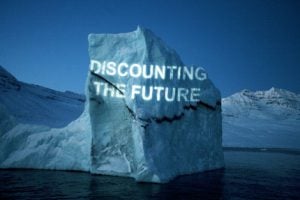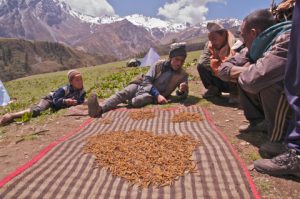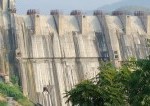When the Intergovernmental Panel for Climate Change (IPCC) unveiled its latest report in Berlin in April, the revelation that the world’s governments are not doing enough to stop the world from getting steadily warmer came with a new feeling of deja vu, thanks to Spanish street artist Isaac Cordal.
A month earlier, the photograph of an installation Cordal had unveiled in his typical, quiet style in Berlin in 2011 had gone viral under a new title. His installation comprised tiny figures in business suits huddled in an intent discussion – despite being up to their eyes in a puddle. Cordal had called it “Electoral campaign,” but Twitter users called it “Politicians discussing global warming.”
To Cordal, it was simply another example of the serendipity – or life imitating art – that informs all of his work.
“Everything is politics. My art is a kind of combat, a way to reflect how the society is today,” Cordal told chinadialogue.
The 39-year-old artist’s ongoing “Cement Eclipses” project centres around 15 centimetre-high figurines that Cordal molds in clay before casting duplicates in cement. Depicting absurd, dramatic or quotidian scenes, he places the figures in hidden corners of cities across Europe – in a puddle, in the mouth of a drainpipe, or atop a street lamp.
Ordinarily, he takes photographs of the installations, then leaves them to be discovered, ignored or even taken home. But “Follow the leaders” and other works have also been shown in galleries and festivals across Europe.
Like the piece now known as “Politicians waiting for climate change,” most of Cordal’s works feature sad, balding men in business suits, obliviously clutching at briefcases as an apocalypse unfolds around them. Sinking, destruction and collapse are recurrent motifs, reflecting the concentric failures of the systems that surround us – corporate capitalism, global consumerism and bureaucratic democracy.
In “Waiting for climate change,” for instance, an installation Cordal created for Belgium’s fourth annual Triennial of Contemporary Art by the Sea, his trademark suited figures stand atop wooden poles on the coast, the water rising and falling around them with tides. Equipped with inner tubes and children’s floats around their waists, they check their mobile phones or stare out into the sea – absurdly prepared, yet doing nothing.
“It’s about the global inertia that we have and the decisions that our leaders take for us,” Cordal said. “I am optimistic, in the sense that I see a lot of people are making changes themselves. But it’s very difficult to achieve a goal if the people who take the decisions are looking the other way.”
Our seeming helplessness to act against climate change – which scientists project will cause sea levels to rise as much as three feet before the end of the century – is for Cordal a symptom of a broader problem.
“Everything is sinking down. The foundation is sinking. Not only for climate change, but all things that are related to the politicians. In society, we have some freedom, but there are a lot of ways that we are slaves, and we don’t know it,” Cordal said.
The tiny size of Cordal’s figures underscores that feeling, exaggerating the ephemeral quality of his installations and exposing the vulnerability of the suited figures that we are used to viewing as all powerful.
Rather than announcing their presence, the works require the audience to discover them.
“Street art needs to be in public, where it can be discussed, attacked, or even removed,” said Philipp Ruch, a performance artist who heads the Berlin-based Center for Political Beauty (ZPS). “What Cordal’s work shows is that it can be even more striking when it is small.”
Social media allows the works to reverberate with new interpretations, Cordal said.
“This was an ephemeral installation. [But with social media] it’s a document that is there, somewhere, and suddenly it becomes alive.”
For a June 2013 installation in Nantes, France, for example, Cordal built a devastated miniature city – his briefcase-toting corporate "slaves" peering over the rubble from bombed-out buildings alongside faceless soldiers in gas masks and riot gear. Here and there figures engage in what appears to be a business meeting though they are already buried waist-deep in the rubble.
In another 2013 work, “Faim” (or “Hunger”), a series of mousetraps litter the floor. Some of them have been sprung, breaking the backs of Cordal’s bald corporate drones. Surrounding them are more traps – baited with tiny briefcases — still awaiting their prey.
Like “Electoral campaign” and “Waiting for climate change,” the humour of these works, along with their miniature size, offsets the bleakness of their message. The idea is to mobilise, not overwhelm.
“I think that art can change things,” Cordal said. “It helps us understand the enigma that is the world and what we are doing here. [But] it’s not a button you can push to change something.”
Photos courtesy of Isaac Cordal






